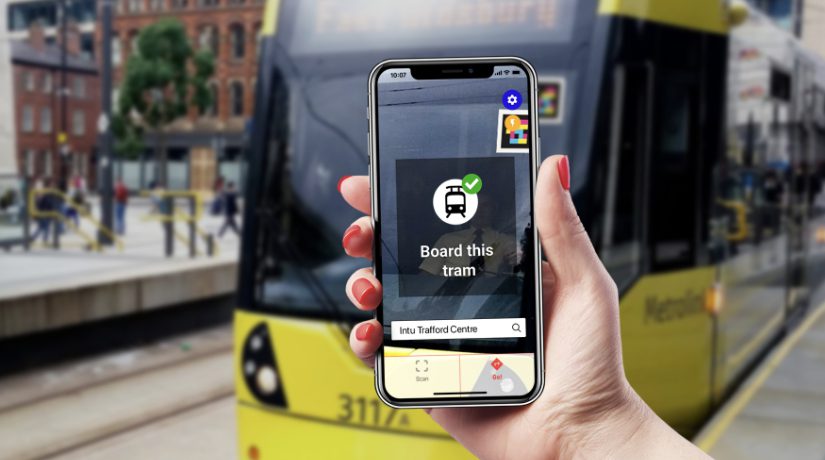In this article, we spoke to Sven Koster Head of New Business Development and Innovation for our GoMedia team, and Lynn Bacigalupo, Project Manager for Icomera in North America, about delivering more accessible passenger transport experiences across our industry.
Modern, inclusive, and fully accessible transport systems should be stress-free to navigate for all people, regardless of age, medical factors, disabilities, or native language.
“As one of the greenest and safest modes of transport, we want to see more people using Rail. Everyone should be able to take the train, and do so with ease.” – Adina Vălean, European Commissioner for Transport.
The Commissioner’s statement above highlights an environmental benefit to the increased usage of passenger transport; however, there are also immediate economic benefits to be realised by providing easier access to education, work, and healthcare through a more accessible passenger transport system.
This creates an important question: Of the people who could be using passenger transport and, by extension, contributing to the economy by purchasing tickets and traveling for work or leisure, how many are actually able to do so?
24.6 million Americans aged 18 and older have self-reported travel-limiting disabilities, and less than half of these passengers are aged 65 and older. In the UK, more than 60% of users with accessibility needs do not attempt or struggle to make independent journeys on passenger transport.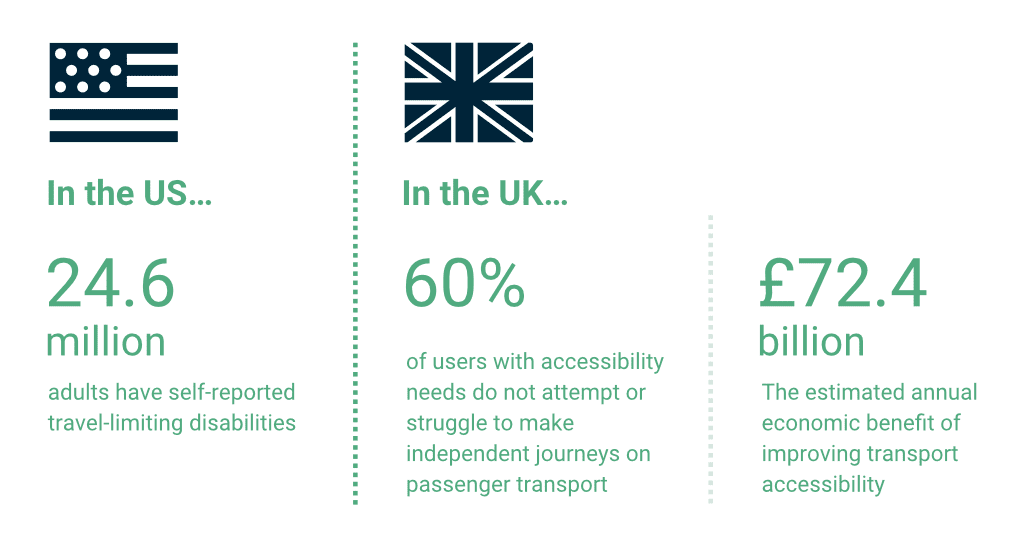 Making travel experiences more accessible will improve journey satisfaction and overall quality of life for these passengers while reducing the estimated impact of inaccessible transport on the national economies, which runs into tens of billions of pounds, euros, and dollars per year.
Making travel experiences more accessible will improve journey satisfaction and overall quality of life for these passengers while reducing the estimated impact of inaccessible transport on the national economies, which runs into tens of billions of pounds, euros, and dollars per year.
The ergonomic design of stations and vehicles will, of course, play a significant role in improving the accessibility of passenger transport. However, alongside these major infrastructural changes, digital technologies which use personal smart devices will provide personalised and at-hand support, reducing the barriers to use for customers with vision and hearingloss – and addressing some hidden needs of a broader audience as well.
These innovations provide cost-effective “quick wins” for transport operators and authorities due to the comparatively small amount of capital investment required to develop and deploy them, and the rapid speed with which this can be done.
Guided Navigation
Transport systems, pavements, and built environments are often not designed to be fully inclusive for blind and partially sighted people, making them difficult to navigate, particularly if the environment is unfamiliar. The Royal National Institute of Blind People (RNIB) reports that 4 out of 10 blind and partially-sighted passengers cannot make all the journeys they need or want to make.
In the UK, Network Rail chose to address this issue by trialling a guided navigation solution at London Euston station – the country’s busiest inter-city passenger terminal – providing real-time information to guide passengers through the station and to the correct train. The solution, named ‘Visor’, was developed by GoMedia in partnership with the RNIB. It leverages NaviLens BIDI codes and GoMedia’s live cloud-based passenger information system to display directions in the NaviLens and NaviLens GO apps.
Passengers simply hold up their smartphone. The device automatically recognises any BIDI codes in view and displays location- and context-specific directions to help them reach their destinations more quickly and easily.
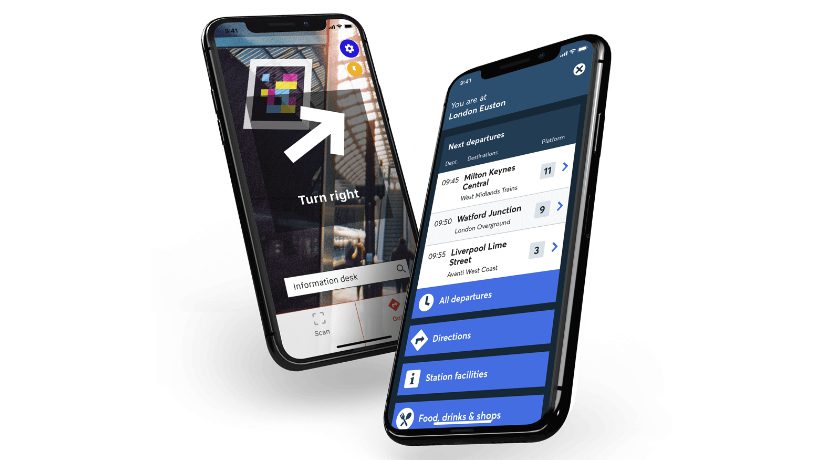 Brightly coloured BIDI codes offer many advantages over standard monochrome QR codes when it comes to assisting blind or partially-sighted passengers on the move:
Brightly coloured BIDI codes offer many advantages over standard monochrome QR codes when it comes to assisting blind or partially-sighted passengers on the move:
- Easier to spot and scan from a distance (up to 30 meters away)
- Registered 12x faster by a mobile device’s camera, even when they are out of focus or orientation
- Multiple codes can be scanned simultaneously
- Secure, locked-down environment compared to standard, open-source QR codes
One can say that BIDI codes are a proven technology with deployments in New York Metro, Barcelona, and LA. They are also used for applications beyond transport; for example, in supermarkets on Kellogg’s cereal packaging to provide ingredient information.
Visor is easy to roll out in passenger transport environments, as it does not require the installation of any additional physical infrastructure aside from BIDI code stickers, thereby presenting an easy means of improving accessibility with minimal disruption.
Closed tests of Visor revealed the following:
- 94% of users could locate elements they were previously unable to find
- 75% would classify it as a fully inclusive service
- 86% felt it would reflect positively on the transport operator if implemented
“Navigating busy train stations can be tricky for everyone and we all want to get from A to B as quickly as we can, but for people like myself, with sight-loss, it can be even more of a challenge. [Visor] has allowed us to push the boundaries of technology to transform the passenger experience for everyone, through the lens of people with sight loss. Technology like this allows blind and partially sighted people to maintain a level of independence whilst proving that inclusive design is better for everyone.” – Marc Powell, Paralympic athlete and Strategic Accessibility Lead at RNIB.
For more information about Visor read our product overview.
Personal Onboard Announcements
Trials of another technology have also been conducted by Transport for Wales (TfW) to make journeys better for passengers with hearing loss.
The application, called HEAR (Hearing Enhanced Audio Relay), enables passengers connected to the vehicle’s onboard Wi-Fi to receive personalised journey announcements to their smart devices in real-time.
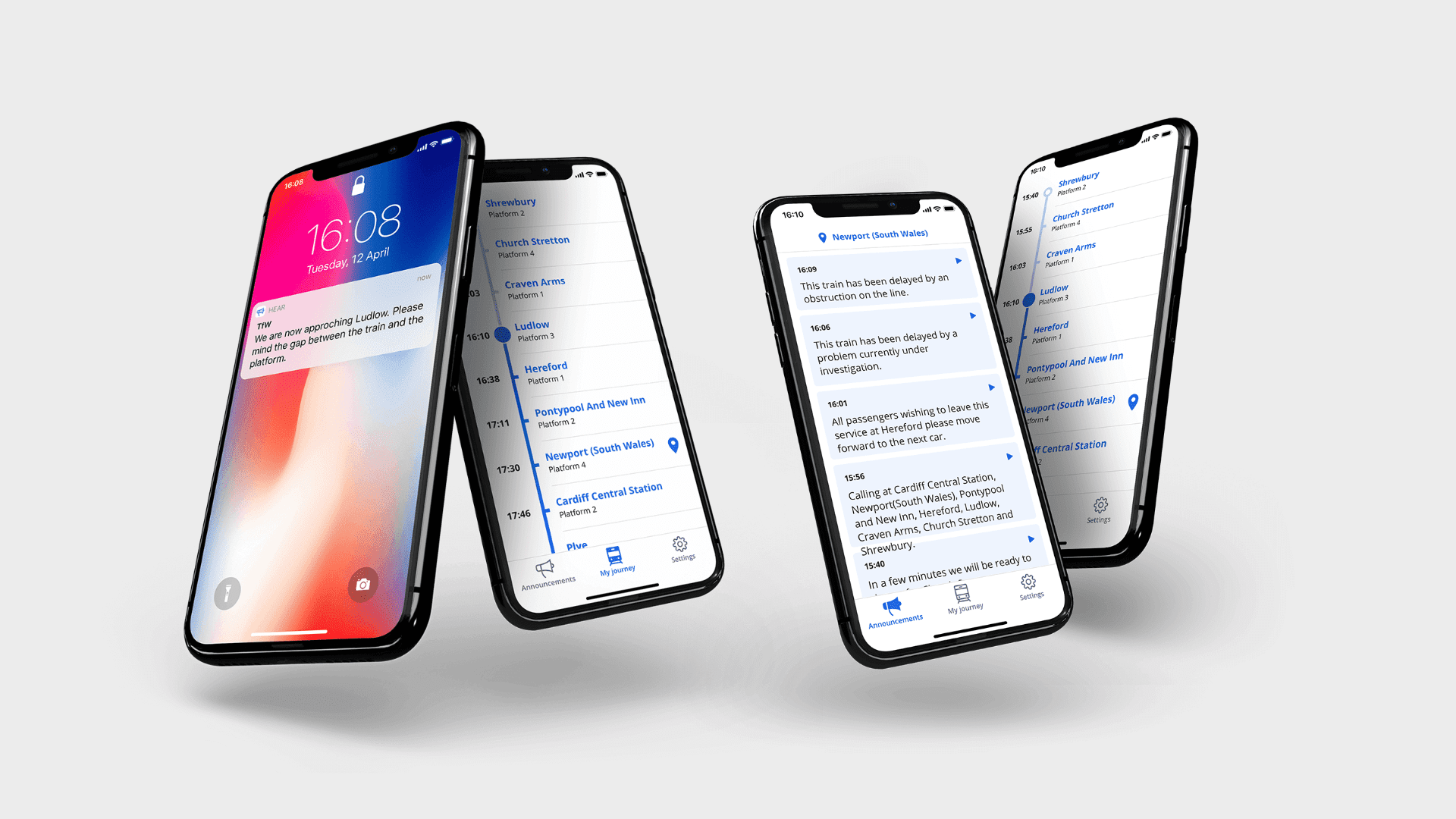
Prior to the trials, a survey of people with hearing loss conducted by charities Hearing Link and Hearing Dogs found:
- Only 7% were somewhat confident that they would be made aware of changes and disruptions during their journey
- Only 16% felt they were treated equally compared to people without hearing loss
- 96% of respondents commented that they would love to have a solution like HEAR implemented on passenger transport
With HEAR, when an announcement occurs, the passenger receives a text notification, and the audio begins playing automatically. The passenger controls the volume and can set notifications for their specific destination or opt to hear them all. A history of announcements is always available, which allows users who need more time or those who were distracted to go back and review.
Additionally, the notifications are multi-lingual, and can be changed in the user settings. A passenger can also set an advanced notice timer when more time is needed to alight. Leveraging personal devices in this way is a viable alternative to hearing loops, and it broadens the use case to include people who have a temporary limitation such as from an ear infection, or a self-imposed limitation, such as headphones.
For more information about HEAR read our product overview.
Inclusive Principles
Following the principles set out in the United Nations Convention on the Rights of Persons with Disabilities (CRPD), many nations have enshrined statutory requirements for public infrastructure to meet specific standards of accessibility.
The UK sets out its accessibility requirements for public services in the Equality Act 2010. The Americans with Disabilities Act Amendments Act (ADAAA) of 2008 plays a similar role in the United States. Equally, Canada’s Accessible Canada Act of 2019 has enabled the Canadian Accessibility Standards Development Organisation (CASDO) to develop a roadmap towards a fully accessible Canada by 2040, by targeting priority areas such as employment, built environments and, of course, transportation.
For EU member states, the European Accessibility Act (2019) and the subsequent European Disability Strategy 2021-2030 have defined targets for the mobility of people with special requirements by removing barriers created through divergent legislation. With the Act set to be fully implemented by all member states by 2025, Europe has seen many initiatives to set a new bar for passenger transport accessibility through technological innovation.
Luxembourg City, for example, won the 2022 Access City Award for implementing wide-reaching improvements after consulting citizens with accessibility needs.
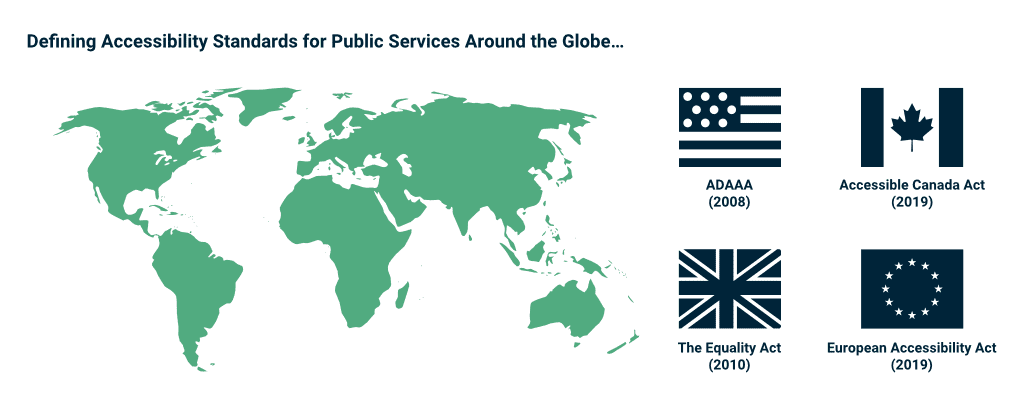
Digital Technologies will be a Critical Factor in Creating Accessible Transport Systems of the Future
Keeping an accessible-focused mindset when designing passenger transport experiences leads to a better, fairer, more personalised journey experience for everyone.
Human needs are diverse and, as we’ve seen in recent years, will change with circumstances and time. Universal and inclusive design principles can help guide the way forward. Pairing purpose-designed digital technology with real-time information will enable transport operators to cater for as many user needs as possible and provide an empowering experience for all.
This article features in Icomera’s 48-page industry report “The Connected Journey Through Transport’s Transformative Decade”.
Supported by data and insights gathered from transport authorities, operators, and technology companies around the world, the report covers the trends and challenges shaping the future of passenger transport, and the role that connectivity will play in achieving the industry’s overarching goals…
